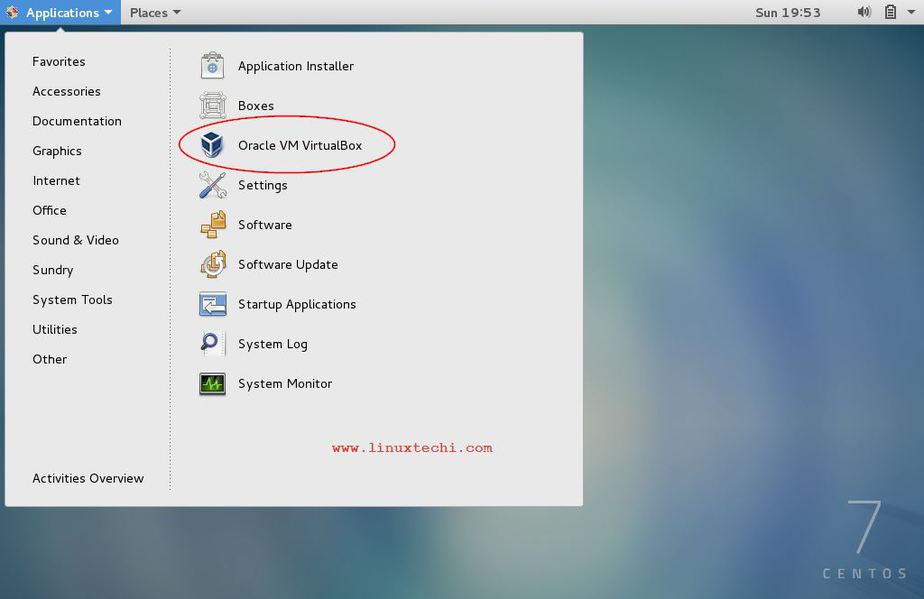Install Centos In Virtualbox
• Download the latest file from OSBoxes. Unzip the file using 7zip to a dedicated folder Please ONLY use these image files for testing purposes and not on a LIVE environment • Start your Virtualbox > Click on New and Enter details as follows • Name: Enter name for your machine • Type: Select Linux • Version: Select Red Hat (64bit) or Red Hat (32bit) depending on the Image file version downloaded earlier • On Next, enter desired memory size (recommend 1024mb) • On Next, select “Use an existing virtual hard disk file”.
Download VirtualBox for Linux Hosts. Mangal font english to hindi free download mp3. Note: The package architecture has to match the Linux kernel architecture, that is, if you are running a 64-bit kernel, install the appropriate AMD64 package (it does not matter if you have an Intel or an AMD CPU). Installing VirtualBox 6.0 in RHEL/CentOS and Fedora. If you’ve any earlier version of Virtualbox installed, remove that before installing latest version. # yum remove VirtualBox* # dnf remove VirtualBox* [On Fedora 22+] Adding VirtualBox Repository. Next add the VirtualBox own repository to install latest VirtualBox 6.0 on following systems.

Click the small folder icon and navigate to the image file directory where you unzipped it to. Click Create • Start the virtual machine > Ensure the first option as seen below is select • Next login with the password provided when you downloaded the image file. Its usually “osboxes.org” • Click on your desired Language / Keyboard Layout • You can skip the sign-in bit and start using your OS Install Guest Additions On CentOS 7 • You need to install the Guest Additions to allow you move your mouse freely between your VM and your physical desktop machine and also resize the VM desktop resolution. Note: To move your mouse put of the VM desktop, simply press the following keys on your keyboard once at the same time “AltGr” + “Ctrl” (both keys on your right hand side) • Let’s start.

Open your terminal and change to root user su - • Update to latest kernel yum update kernel* reboot • Install following packages rpm -Uvh yum install gcc kernel-devel kernel-headers dkms make bzip2 perl • Mount the Guest Additions CD by clicking on Devices > Insert Guest Additions CD image. Cancel the promt displayed • Run the following commands mkdir /media/VirtualBoxGuestAdditions mount -r /dev/cdrom /media/VirtualBoxGuestAdditions cd /media/VirtualBoxGuestAdditions./VBoxLinuxAdditions.run • Reboot the machine and you should now be able to move your mouse between the screens. As seen also, the scrollbar at the edge of the screen now gone Change Root Password on CentOS 7 • First change to root user su - • Run the following command and enter new password passwd.
Is an open source cross-platform virtualization software which allows you to run multiple guest operating systems (virtual machines) simultaneously. In this tutorial we will show you how to install VirtualBox from the Oracle repositories on CentOS 7 systems. Prerequisites Before continuing with this tutorial, make sure you are logged in as a.
Centos 7 Virtualbox
Installing VirtualBox from Oracle repositories Follow the steps below to install the VirtualBox on your CentOS 7 machine: • Start by downloading the build tools necessary for compiling the vboxdrv kernel module. ● vboxdrv.service - VirtualBox Linux kernel module Loaded: loaded (/usr/lib/virtualbox/vboxdrv.sh; enabled; vendor preset: disabled) Active: active (exited) since Thu 2018-10-25 21:31:52 UTC; 6s ago Installing VirtualBox Extension Pack Thr VirtualBox Extension Pack provides several useful functionalities for guest machines such as virtual USB 2.0 and 3.0 devices, support for RDP, images encryption and more. At the time of writing this article, the latest version of VirtualBox is 5.2.20. Before downloading the extension pack using the command bellow you should check the to see if a newer version is available. Download the extension pack file by typing.